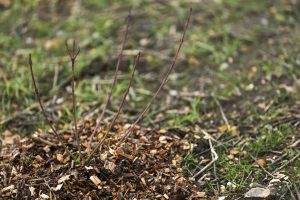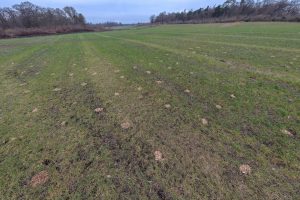Back in 2021, plans were put in place for Panshanger Park to be involved in the Queen’s Green Canopy initiative. As part of this, we pledged to plant 17,000 trees in honour of Her Late Majesty Queen Elizabeth II.
With the project now completed, Michael Charlton, our mineral estates manager, discusses the different species of trees and shrubs planted and how they are enhancing biodiversity.
Michael said: “I’m very happy to have surpassed our target, by planting 17,341 trees and shrubs in total! It has been an honour and a privilege for all of us at the park to have been involved in the Queen’s Green Canopy initiative and to know that part of that legacy will be here, at our new Queen’s Wood.
“Within Queen’s Wood, we planted 12 different species of tree and seven species of shrub, providing a rich diversity resulting in a better resilience to climate change, pests and diseases. The idea was, if one or two species struggles, then there are plenty of other species which will hopefully thrive.
“Our variety of trees include oak, hornbeam, birch, rowan, small leaved lime, field maple, wild cherry, alder, scots pine, crab apple, pear and willow, with our different shrub types being hazel, hawthorne, holly, blackthorn, guelder rose, spindle and dogwood. These were all selected as they will flourish well in the sandy soils here at the park and are all native species, which are best for wildlife and nature recovery.
 “Interestingly, the highest proportion of trees planted were oak and hornbeam, as we knew these would grow well and are similar to the trees in our surrounding woodlands. Additionally, bunches of scots pine saplings were added, as these are evergreen, so will provide colour in the winter and were also a key part of the 18th century landscape design of the park.
“Interestingly, the highest proportion of trees planted were oak and hornbeam, as we knew these would grow well and are similar to the trees in our surrounding woodlands. Additionally, bunches of scots pine saplings were added, as these are evergreen, so will provide colour in the winter and were also a key part of the 18th century landscape design of the park.
“As part of the design for Queen’s Wood, shrubs – such as hawthorn, hazel, dogwood and spindle – were planted along the edge of the woodland to create transitional zones between the open areas and the woodland.
“Once grown, this new layout – with open wood pasture, glades, rides and ponds – will provide a new habitat with a varying structure for the wildlife to thrive in and, by linking the existing woodland areas, will also establish new corridors through which wildlife can move. This means that Queen’s Wood will support and aim to increase the biodiversity in the park.
“During the next few years, we will maintain the areas surrounding each tree, keeping them free of weeds and grass and topped up with mulch – damp wood chip – which will hold moisture in around the trees. After three to four years, we will look to potentially prune the trees to ensure they grow upwards rather than outwards, once they are established.
“In the first year or two, public access to the Queen’s Wood will not be allowed, to provide the best opportunities for the trees to grow. After this, the area will be opened and visitors will be welcome to walk around the woodland and watch the trees flourish over time.
“With the planted trees being protected by a deer and rabbit proof fence – made from sustainably sourced sweet chestnut – which will be checked regularly to make sure it is still viable, this will enable further trees to grow via natural regeneration and help ensure our woodland will be able to absorb an estimated 2,600 tonnes of carbon over the next 50 years.
“As well as the biodiversity and sustainability benefits, Queen’s Wood will also enhance the historic landscape of the Grade II* listed park, as our design for this area was inspired by the original 18th century mapping. With new paths being provided for our visitors to enjoy, they will be able to closely see how the woodland develops over the coming years.
“Lastly, I would like to thank everyone who was involved in creating Queen’s Wood, and for helping us achieve our target and beyond! We couldn’t have done it without your support.”



